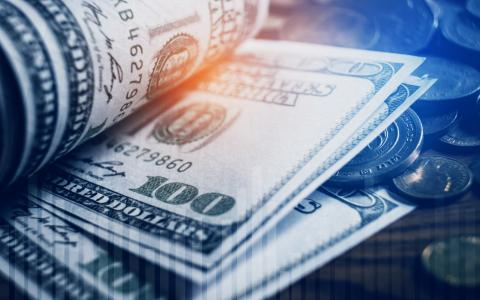
Personal loans are the now the fastest growing consumer debt category, according to new datafrom credit bureau TransUnion.
Outstanding personal loan balances now stand at $120 billion.
Here what you need to know and what it means for you.
What Is A Personal Loan?
A personal loan is an unsecured loan typically from $1,000 - $100,000 with fixed or variable interest rates that can be used to make a large purchase or to consolidate debt.
Borrowers can use personal loans for credit card debt consolidation, home improvements, medical bills and other major life expenses.
What Has Fueled This Growth?
1. Online lenders
The surge in fintech ventures and corresponding venture funding has led to a proliferation of personal loan lending.
Online lenders have fueled this record growth, accounting for 36% of total personal loans last year compared with less than 1% in 2010, according to TransUnion.
2. Technology
While personal loans are not a new financial product (banks have been making personal loans for years), technology has helped make the personal loan transaction more accessible.
Prospective borrowers can complete an application online and receive funding within days or less.
3. Accessibility
Prior to the fintech boom, access to personal loans arguably was more limited to banks and some alternative, higher yield lenders.
Today, the growth of online lenders has made personal loans more accessible and broadly accepted.
More competition has created more transparency in the marketplace, which has benefited consumers.
How Personal Loans Can Help With Credit Card Consolidation
A personal loan is one of the best solutions to help manage credit card debt.
When you consolidate credit card debt, you combine your existing credit card debt into a new, single personal loan at a lower interest rate.
For example, many credit cards have annual percentage yields (APRs) ranging from 10-20%.
If you have existing credit card debt, for example, you might be able to obtain a personal loan at a lower interest rate than your existing credit card interest rate.
For example, if you have $10,000 of credit card debt at 15% interest and can obtain a personal loan at 7% interest, you could potentially cut your interest payments by more than 50%.
That can save you significant interest costs and help you pay off your credit card debt faster.
What Are The Risks Of Personal Loans?
First, the macro side.
Anytime you have one debt category labeled as the "fastest growing," there is concern for potential default by consumers.
A large scale default by borrowers in an unfavorable economic environment could raise concern.
However, unlike mortgages, the balances on personal loans are smaller.
The average debt per borrower for unsecured loans is $7,986 in Q1 2018. Further, aggregate outstanding personal loan balances represent about 10% of outstanding mortgage balances.
Also, loan performance remains strong. According to TransUnion, the default rate for personal loans is approximately 3.5%.
Second, the consumer side.
Like any consumer debt, when you borrow a loan, make sure you can pay it back.
It sounds obvious, but always remember why you borrowed the loan and make sure you have an action plan for debt repayment.
It's important to know the why.
For example, if your rationale is credit card debt consolidation, then a personal loan with a lower interest rate is a smart move. You already have debt outstanding, and this is one strategy to cut your interest rate.
If you're borrowing a personal loan as a new debt obligation for home renovations, a wedding or a honeymoon, make sure you understand the terms and that you can repay the loan on time.
When you understand the why, it all becomes much easier.
Zack Friedman is Founder & CEO of Make Lemonade, a personal finance comparison site. Follow Zack on Twitter. Read his Forbes columns. Contact Zack for speaking engagements.



